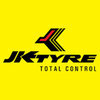
i
Hirschvogel Components
Filter interviews by
Hirschvogel Components VMC Operator Interview Questions and Answers
Hirschvogel Components VMC Operator Interview Experiences
1 interview found
I applied via Walk-in
(2 Questions)
- Q1. Why should we hire you
- Q2. Why are you leave your old company
(2 Questions)
- Q1. Basi question like measuring instruments
- Q2. Tell me about setting of cnc vmc
(1 Question)
- Q1. Salary discussion
Interview Preparation Tips
Yearly increment is less then 10percent working is hard
Top trending discussions






Interview questions from similar companies

I applied via Walk-in and was interviewed before Mar 2020. There were 3 interview rounds.
Interview Questionnaire
2 Questions
- Q1. About family, hobbies, weekness and strength
- Q2. Questions based on qualification
Interview Preparation Tips
- Basic science

I applied via Company Website
(6 Questions)
- Q1. What is mean of TTR & why required for powder coating process ?
- Ans.
TTR stands for Total Thickness Range and is required for powder coating process to ensure proper adhesion and durability.
TTR is the range of thickness of the substrate and any coatings applied to it
It is important for powder coating as it ensures proper adhesion and durability
If the TTR is too large, the coating may not adhere properly or may crack and peel over time
Examples of substrates with varying TTR include alumi
- Q2. What is mean of detection & prevention pokayoke?
- Ans.
Detection and prevention poka-yoke refers to the use of techniques to identify and prevent errors in a process.
Poka-yoke is a Japanese term for mistake-proofing
Detection poka-yoke involves identifying errors as they occur
Prevention poka-yoke involves designing processes to prevent errors from occurring
Examples of poka-yoke include using checklists, color-coding, and physical barriers
Poka-yoke can improve quality, reduc
- Q3. Which condition PH decrease in conversion coating?
- Ans.
Decrease in pH can occur due to various factors in conversion coating.
Decrease in pH can be caused by the addition of an acid or acidic solution.
Presence of reactive metals in the coating can lead to a decrease in pH.
Contamination by organic materials or impurities can also lower the pH.
Chemical reactions during the conversion coating process may result in pH decrease.
Examples of conversion coatings include phosphating
- Q4. How to prepared 0.1 N H2so4 & Naoh ?
- Ans.
To prepare 0.1 N H2SO4 & NaOH, calculate the required amount of solute and dissolve it in distilled water.
Calculate the molar mass of H2SO4 and NaOH
Determine the required amount of solute using the formula: N = (W/M) x (1000/V)
Dissolve the calculated amount of solute in distilled water to make 1 liter of solution
Standardize the solution using a primary standard
Use a burette to measure the volume of solution needed for
- Q5. How to cross verify 0.1 normality H2so4?
- Ans.
To cross verify 0.1 normality H2SO4, use a standard solution of NaOH and an indicator.
Prepare a standard solution of NaOH of known concentration.
Add a few drops of an indicator such as phenolphthalein to the H2SO4 solution.
Titrate the H2SO4 solution with the NaOH solution until the endpoint is reached.
The endpoint is when the indicator changes color, indicating that all the H2SO4 has reacted with the NaOH.
Calculate the...
- Q6. How to prepared ph buffer solution as per defined standard in tablet?
- Ans.
Prepare a pH buffer solution as per defined standard in tablet.
Determine the required pH value and buffer capacity
Select the appropriate buffer system and calculate the required amounts of buffer components
Dissolve the buffer components in water and adjust the pH as necessary
Check the pH and adjust if necessary
Filter the solution and store in a clean container
Use a calibrated pH meter to verify the pH of the solution
Interview Preparation Tips

I applied via Recruitment Consulltant and was interviewed before Oct 2022. There were 3 interview rounds.

(2 Questions)
- Q1. Where are you living?
- Q2. Why are you leaving your last company?
(4 Questions)
- Q1. Circuit diagram of relay holding.
- Ans.
A relay holding circuit diagram is used to keep the relay in the energized state even after the control signal is removed.
The circuit typically includes a holding contact that maintains the relay coil energized.
A latching relay can also be used for holding without continuous power supply.
Examples: ladder logic diagram with a holding contact, latching relay circuit diagram.
- Q2. What is PNP and NPN
- Ans.
PNP and NPN are types of bipolar junction transistors commonly used in electronic circuits.
PNP transistor has a layer of N-type semiconductor between two layers of P-type semiconductor, while NPN transistor has a layer of P-type semiconductor between two layers of N-type semiconductor.
In a PNP transistor, current flows from the emitter to the base and then to the collector, while in an NPN transistor, current flows fro...
- Q3. How many type of sensor?
- Ans.
There are various types of sensors used for different purposes.
Temperature sensors (e.g. thermocouples, thermistors)
Pressure sensors (e.g. piezoelectric sensors)
Motion sensors (e.g. accelerometers, gyroscopes)
Proximity sensors (e.g. ultrasonic sensors)
Light sensors (e.g. photodiodes, phototransistors)
- Q4. What is PLC and full form?
- Ans.
PLC stands for Programmable Logic Controller, which is a digital computer used for automation of electromechanical processes.
PLC is used to control machinery in manufacturing processes, such as assembly lines, robotic devices, or any activity that requires high reliability control.
It is programmed using a specialized computer language, typically ladder logic or function block diagram.
PLCs are commonly used in industrie...
Interview Preparation Tips
Skills evaluated in this interview

I applied via Walk-in and was interviewed before Sep 2021. There were 3 interview rounds.

General English, Maths,Basics in Diploma.
(3 Questions)
- Q1. Communication skills, knowledge development and Aptitude,Life Goals.
- Q2. Self details and discuss with some company benefits. Salary discussion
- Q3. Some company rules and regulations share with me.
Interview Preparation Tips
- Rubber technology
- Plastics and polymertec

Interview Questionnaire
1 Question
- Q1. How you control the rejection %
- Ans.
To control rejection %, focus on quality control measures, process improvements, and employee training.
Implement strict quality control measures to identify and rectify defects early on.
Continuously improve processes to minimize errors and rework.
Invest in employee training and development to enhance skills and knowledge.
Regularly monitor rejection rates and analyze root causes to address underlying issues.
Establish ef...

I applied via Campus Placement and was interviewed in Aug 2021. There was 1 interview round.
(1 Question)
- Q1. Tell me about yourself.
- Ans.
I am a highly motivated and experienced operator with a strong background in the field.
I have been working as an operator for the past 10 years.
I have expertise in operating various types of machinery and equipment.
I am skilled in troubleshooting and resolving technical issues.
I have a proven track record of ensuring smooth operations and maximizing productivity.
I am detail-oriented and prioritize safety in all aspects
Interview Preparation Tips

I applied via Walk-in and was interviewed before Jan 2023. There was 1 interview round.
(5 Questions)
- Q1. Will you do work in my company
- Q2. Behaviour have to check
- Q3. Manpower handling
- Q4. Process handling
- Q5. This is add all questionsb

I applied via Walk-in and was interviewed before May 2023. There were 3 interview rounds.
Test by app in Mobile
Psychology test as same as coding decoding
(1 Question)
- Q1. About family and some technical questions and also discussed about case study

(2 Questions)
- Q1. What is the manufacturing processes?
- Ans.
Manufacturing processes refer to the series of steps involved in producing a product from raw materials.
Manufacturing processes involve activities such as cutting, shaping, drilling, welding, and assembling.
Examples include injection molding for plastic products, CNC machining for metal parts, and assembly line production for automobiles.
Processes can be categorized into casting, forming, machining, joining, and finish
- Q2. What is the TPM?
- Ans.
TPM stands for Total Productive Maintenance, a proactive approach to maintenance that aims to maximize equipment effectiveness.
TPM focuses on preventing equipment breakdowns through regular maintenance and employee involvement
It involves setting up autonomous maintenance teams to perform routine tasks
TPM also includes planned maintenance, quality maintenance, and focused improvement activities
The goal of TPM is to impr...
(2 Questions)
- Q1. Tell me about you self?
- Ans.
Experienced machine operator with a strong attention to detail and a proven track record of meeting production goals.
I have X years of experience operating various types of machinery
I am skilled in troubleshooting and resolving technical issues
I have a strong focus on safety protocols and quality control measures
I consistently meet or exceed production targets, such as increasing output by X% in my previous role
- Q2. What is you goals?
- Ans.
My goal is to continuously improve my skills and knowledge in machine operation to become a highly efficient and reliable operator.
Continuously seek opportunities for training and development in machine operation
Strive to increase productivity and efficiency in machine operation tasks
Set personal goals for improving performance and meeting production targets
Skills evaluated in this interview
Hirschvogel Components Interview FAQs
Tell us how to improve this page.
Hirschvogel Components Interviews By Designations
- Hirschvogel Components Engineer Interview Questions
- Hirschvogel Components VMC Operator Interview Questions
- Hirschvogel Components Deputy Manager - Finance Interview Questions
- Hirschvogel Components Assistant Manager Interview Questions
- Hirschvogel Components Quaity Control Engineer Interview Questions
Interview Questions for Popular Designations
Hirschvogel Components VMC Operator Interview Process
based on 1 interview
Interview experience
Interview Questions from Similar Companies
Hirschvogel Components VMC Operator Reviews and Ratings
based on 1 review
Rating in categories
|
Junior Engineer
99
salaries
| ₹2 L/yr - ₹4 L/yr |
|
Engineer
74
salaries
| ₹2.5 L/yr - ₹6 L/yr |
|
Assistant Manager
30
salaries
| ₹6.7 L/yr - ₹12.6 L/yr |
|
Production Engineer
27
salaries
| ₹2 L/yr - ₹4.2 L/yr |
|
Quality Engineer
19
salaries
| ₹3 L/yr - ₹3.7 L/yr |

Bosch

Ceat Tyres

UNO Minda

Apollo Tyres
- Home >
- Interviews >
- Hirschvogel Components Interview Questions >
- Hirschvogel Components VMC Operator Interview Questions











